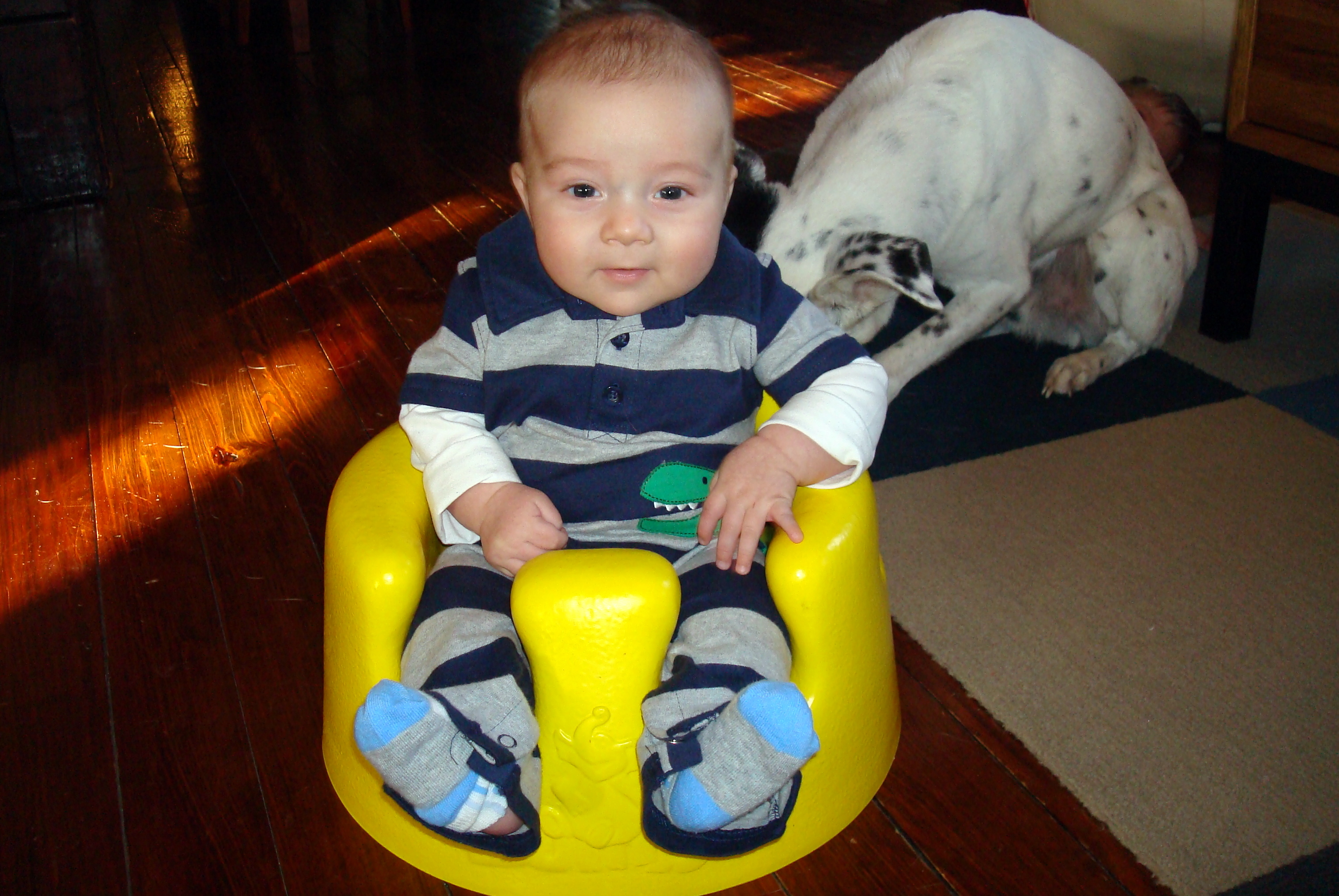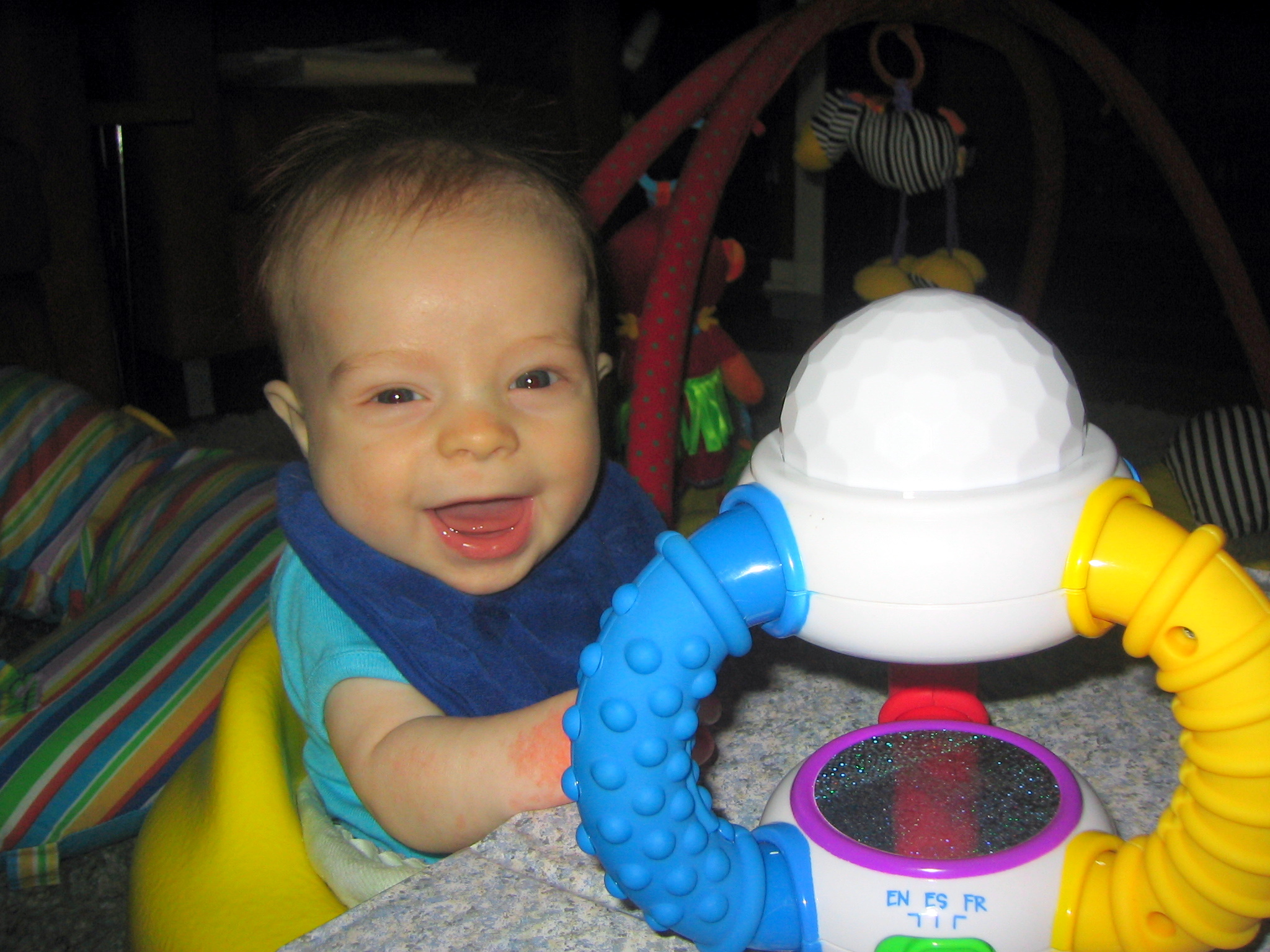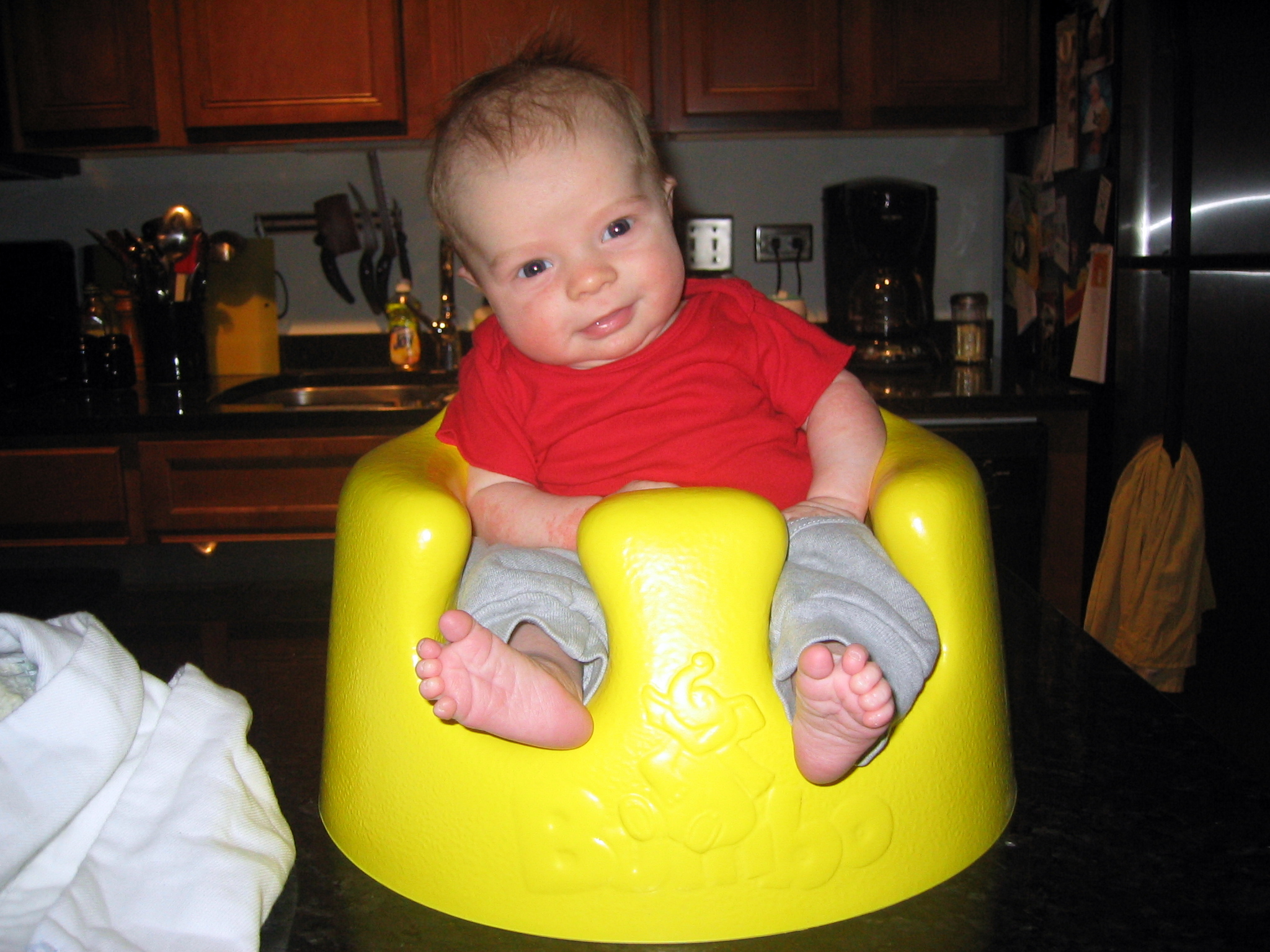
The Bumbo baby seat is one controversial piece of polyurethane. Do a quick google search for “Bumbo seat” and you’ll see what I mean. Mommy blogs and parenting forums are full of passionate posts of love and hate for the Bumbo. Many physical therapists and parents of children with special needs have strong opinions about the seat, too, largely because the seat is marketed using language usually used to describe therapeutic equipment. The manufacturer of the product makes the following claim on their website:
“The seat stabilizes the child into slight hip flexion, placing the pelvis in a slight anterior pelvic tilt which facilitates lumbar extension. This action, combined with the gentle curve of the seat back that matches the natural curve of the rib cage, facilitates the baby around the lower ribs and trunk for stabilization. The Seat allows for active practice of the head and postural trunk control. It also allows a child the pelvic stability needed to get the hands into the midline for play. Upright positioning facilitates an improved visual field of the environment, improved respirations and breath control, assists a baby who needs to be upright after feeding due to reflux and many other benefits.”
Although the statement is in quotation marks on their site, the manufacturers don’t give credit to the individual who provided the quote, nor do they cite any studies. To my knowledge, there is no research to support or refute the claims made by Bumbo International.
I own one of these seats. I have used these seats with my own children as well as the children I’ve worked with. I have recommended parents purchase these seats. I’m not sure whether the seats accomplish what they claim to accomplish, but I’m not sure I care because – and here’s where I’m going to say something you never thought you’d hear a pediatric PT say – development is about so much more than the position of the pelvis (cue angry comments from every other pediatric PT who reads this post).
The shape and material of the seat sort of “grabs” the baby without the need for any straps or belts. Unlike infant car seat carriers or bouncy seats – which put the baby in a “C” shape with the legs relatively straight – the Bumbo has a dip in the back of the seat, bending the legs with the knees slightly higher than the hips. Although the seat curves around the trunk, providing some support for the mid-back, the upper back, head, and neck are unsupported. This means that a baby who isn’t ready for the seat looks like my oldest son, M, looked in our Bumbo when he was 2 months old:
Notice that he is slouching with his head and trunk leaned to the side. You can’t see his pelvis, but I imagine it is tipped backward (although I don’t blame that on the Bumbo – at this age his pelvis would be tipped backward in any form of supported sitting). At 2 months old, he hasn’t developed the ability to consistently bring his hands to midline and reach for toys in supported sitting, so there’s really nothing he can DO in the seat at this developmental stage. Bottom line is, If a baby looks like this in the Bumbo, it is a good indication he isn’t probably ready.
But look at what happened when we put him in the seat at 4 months old:

This isn’t the greatest picture of his posture in the seat. He looks pretty upright, and you can tell that he is even leaning his trunk forward away from the back of the seat rather than collapsing into it. This makes me think his pelvis is probably tipped forward, but I can’t tell here and I can’t really remember. What I do remember about this day and this picture, however, is how excited he was to be sitting up and playing with the toy in front of him. Bumbo seats were pretty new at that time, and the tray wasn’t on the market yet, so I covered a cardboard box with contact paper, cut out one side, and turned it upside down in front of him as sort of a table. Using a Bumbo seat with a tray gave my son – who wasn’t yet sitting on his own but was very much ready to get upright and see the world – the opportunity to practice his reaching skills and work on his upper trunk muscles in preparation for sitting. And he was delighted doing it, and I was delighted to be interacting with my infant like he was a real boy.
My children are typically-developing, but the Bumbo has also worked well for many infants and toddlers I’ve seen with developmental disability and delay. Infants typically begin sitting independently between 5-8 months. The Bumbo seat can allow a similar-aged child with delays to sit supported on the floor, interacting with his peers, siblings, and/or caregivers at eye-level. This is so critical for social development, and I’m not aware of any other piece of commercially available equipment at this price point that allows for this. For kids with cerebral palsy or similar diagnoses who tend to arch with stiff muscles, the Bumbo seat can keep their hips bent and help “break up” extensor tone and allow them to sit up and play. For other kids with diagnoses such as Down syndrome that tend to have low muscle tone and difficulty holding themselves up against gravity, the seat gives them the support to sit upright (as long as they do have some head, neck and upper trunk control) for the first time and interact with their environment, peers, and family in a meaningful way.
In my opinion, the Bumbo seat can be very effective when used with the right child at the right time, allowing for good practice of upper trunk and head control – as well as arm use and social interactions – in upright sitting. It is true that, for some kids, the deep well of the Bumbo seat does lead to a flexed back and rounded pelvis in sitting. However, for the age children the seat is designed for (pre-sitters and children with emerging sitting skills), a posteriorly tilted pelvis and rounded spine are a typical sitting position. Once baby is able to sit independently with an upright pelvis and spine, she wouldn’t need the seat anyway. Like any piece of equipment, the Bumbo seat should be used in moderation. Floor play (tummy time!) is always best for development and learning. And certainly a baby who is an emerging sitter should be practicing that skill outside this seat as well. Part of learning to sit is learning to move in and out of sitting, shift weight, fall and correct, and none of those things can occur in the Bumbo.
I do disagree with the recommendedation that Bumbo be used for babies age 3-10 months. I think 3 months is a little early for most babies. And, once a baby is able to sit alone (typically between 5-8 months), there really isn’t any benefit to this seat . By about 6 months, most babies are starting to learn to move by creeping, crawling, or rolling and aren’t going to want to be “stuck” in this chair, nor should they be. I’d say this chair is most appropriate for a typically-developing 4-6 month old, and – realistically – most kids aren’t going to use this seat for more than 1-2 months, tops. For families with infants who are delayed or have special needs, the seat may be used for a longer period of time. And it is nice in that it is a readily-available and reasonably-priced seat that may also be used by the baby’s non-disabled peers, so it doesn’t look like a piece of “special” equipment.
Of course you should always talk to your health provider or therapist about your child’s unique situation, and – to avoid injury – the Bumbo should NEVER be used on a raised surface. The Bumbo is certainly not a “must have” for most babies. But if you think the Bumbo will work for your family and you’re willing to shell out $40 for a seat that may only be used for 1-2 months, I say the Bumbo is a go-go.


Good points made.Linking back on my post about it. I ultimately got one but do to the short time frame of use decided it wasn’t for me, but I like your post on helping parents to understand that fact!
oops!Here is the post! http://www.pinkoatmeal.com/2014/04/bumbo-seat-good-bad-physical-therapists-perspective.html
Thanks for your thoughtful post! It’s nice to see a moderate judgment of the chair indicating both the pluses and minuses. It’s hard to decide what to do when all you hear is “this thing is the best” from one camp and “this thing is not good for your kid” from the other.
Thanks for this post. I was looking forsomething in which to place my 4 month old pre-sitting baby with decent head control for short periods of time when I need to set her down (e.g., run to the bathroom) and to mix up her play- aside from laying her down. Since there’s a short window of use, I opted to pick one up at a kids consignment store and snagged mine for a reasonable $13. I’ll sell it back or share with a friend when it’s time to move on in a couple months.